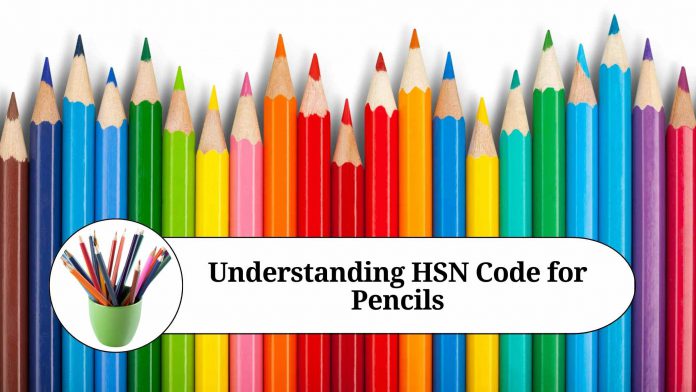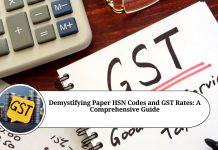When it comes to importing or exporting goods, it is essential to understand the Harmonized System of Nomenclature (HSN) code. HSN code is a globally recognized system for classifying goods based on their nature, composition, and intended use. Each product is assigned a unique HSN code that simplifies trade procedures and helps to identify the applicable taxes and duties. In this blog post, we will discuss the HSN code for pencils.
Pencils are widely used writing instruments made from a graphite core and encased in a wooden or plastic body. They come in various shapes, sizes, and colors, and are an essential tool for students, artists, and professionals. Let’s take a closer look at the HSN code for pencils.
HSN Code for Pencils
The HSN code for pencils is 9609. This code falls under Chapter 96 of the HSN classification, which deals with various types of writing instruments. The HSN code 9609 is further divided into subheadings based on the type and composition of the pencil.
Subheading 9609.10 – Pencils and crayons, with leads encased in a rigid sheath
This subheading covers pencils and crayons with leads encased in a rigid sheath made of plastic, wood, or other materials. The lead can be of any color, size, or hardness and must be fixed inside the sheath, making it rigid and not retractable. This subheading includes regular pencils, colored pencils, carpenter pencils, and other similar items.
Subheading 9609.90 – Other
This subheading includes pencils that do not fall under the previous subheading, such as mechanical pencils, propelling pencils, and clutch pencils. These pencils do not have a rigid sheath and typically use a refillable lead or a mechanism to advance the lead. This subheading also covers erasers, pencil sharpeners, and other pencil accessories.
Importance of HSN Code for Pencils
Knowing the correct HSN code for pencils is crucial for importers, exporters, and manufacturers. It helps to determine the applicable taxes, customs duties, and other levies that may apply when trading pencils across borders. The HSN code also enables government agencies to monitor the import and export of goods and ensures compliance with international trade regulations.
Conclusion
Pencils are classified under the HSN code 9609, which includes subheadings for pencils and crayons with leads encased in a rigid sheath, and other pencils without a rigid sheath. Understanding the correct HSN code for pencils is essential for international trade and can help avoid any complications during customs clearance. If you’re dealing with pencils or any other goods, make sure to consult the relevant HSN code to stay compliant with international trade regulations.
Read more useful content:
Frequently Asked Questions (FAQs)
Q: What is HSN code for pencil?
A: The HSN code for pencil is 9609.
Q: What does the HSN code 9609 cover?
A: The HSN code 9609 covers various types of writing instruments, including pencils, crayons, pens, and markers.
Q: Are all types of pencils classified under the same HSN code?
A: No, pencils are further classified into subheadings based on their type and composition. Pencils and crayons with leads encased in a rigid sheath are classified under subheading 9609.10, while other types of pencils are classified under subheading 9609.90.
Q: What types of pencils are included in subheading 9609.10?
A: Subheading 9609.10 covers pencils and crayons with leads encased in a rigid sheath made of plastic, wood, or other materials. This subheading includes regular pencils, colored pencils, carpenter pencils, and other similar items.
Q: What types of pencils are included in subheading 9609.90?
A: Subheading 9609.90 includes pencils that do not have a rigid sheath, such as mechanical pencils, propelling pencils, and clutch pencils. This subheading also covers erasers, pencil sharpeners, and other pencil accessories.
Q: Why is it important to know the HSN code for pencils?
A: Knowing the correct HSN code for pencils is essential for importers, exporters, and manufacturers. It helps to determine the applicable taxes, customs duties, and other levies that may apply when trading pencils across borders. The HSN code also enables government agencies to monitor the import and export of goods and ensures compliance with international trade regulations.
Q: Can the HSN code for pencils vary across different countries?
A: Yes, the HSN code for pencils may vary across different countries. However, most countries follow the global HSN classification system, which provides a standard code for each product that simplifies international trade procedures.




















